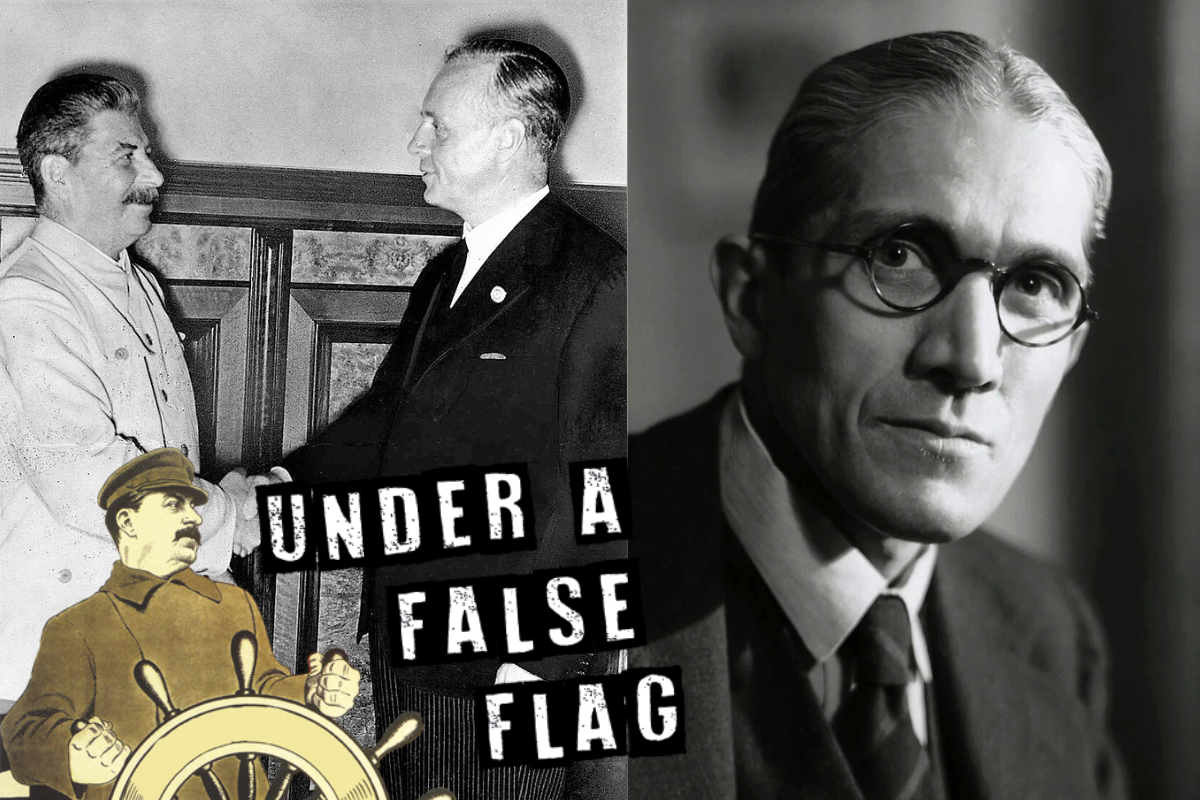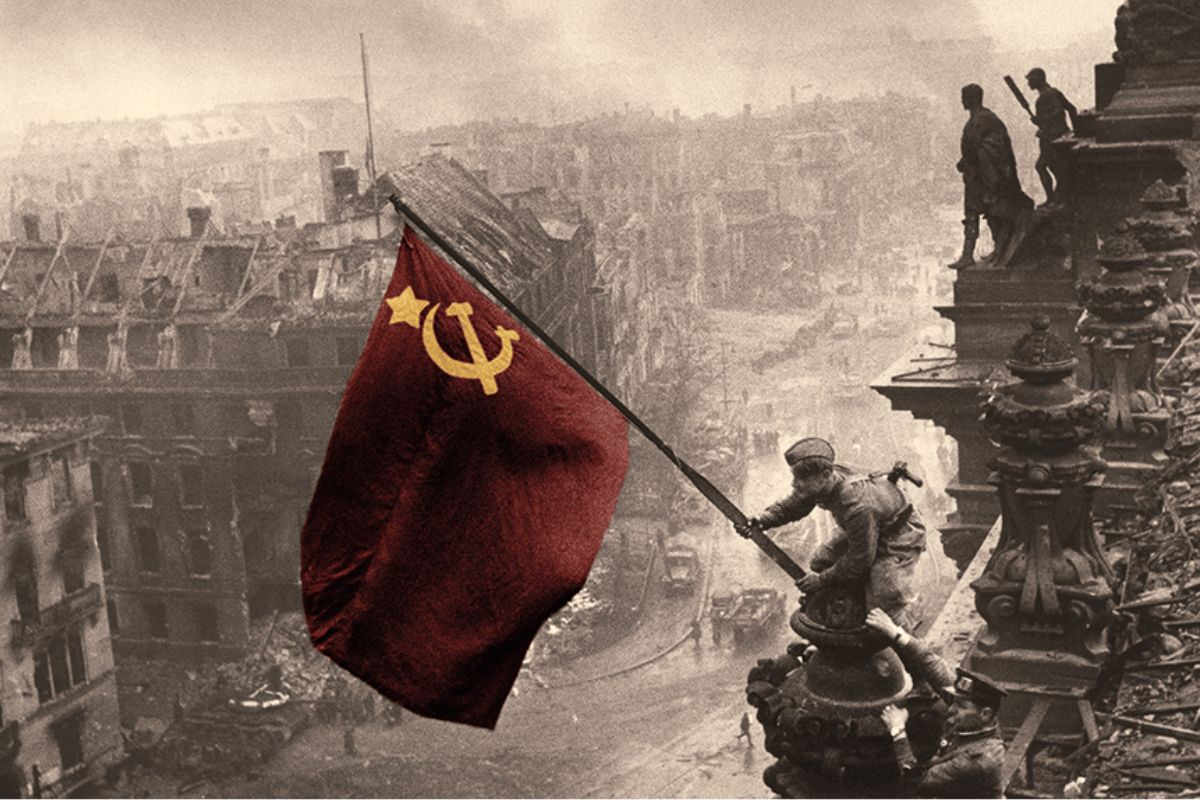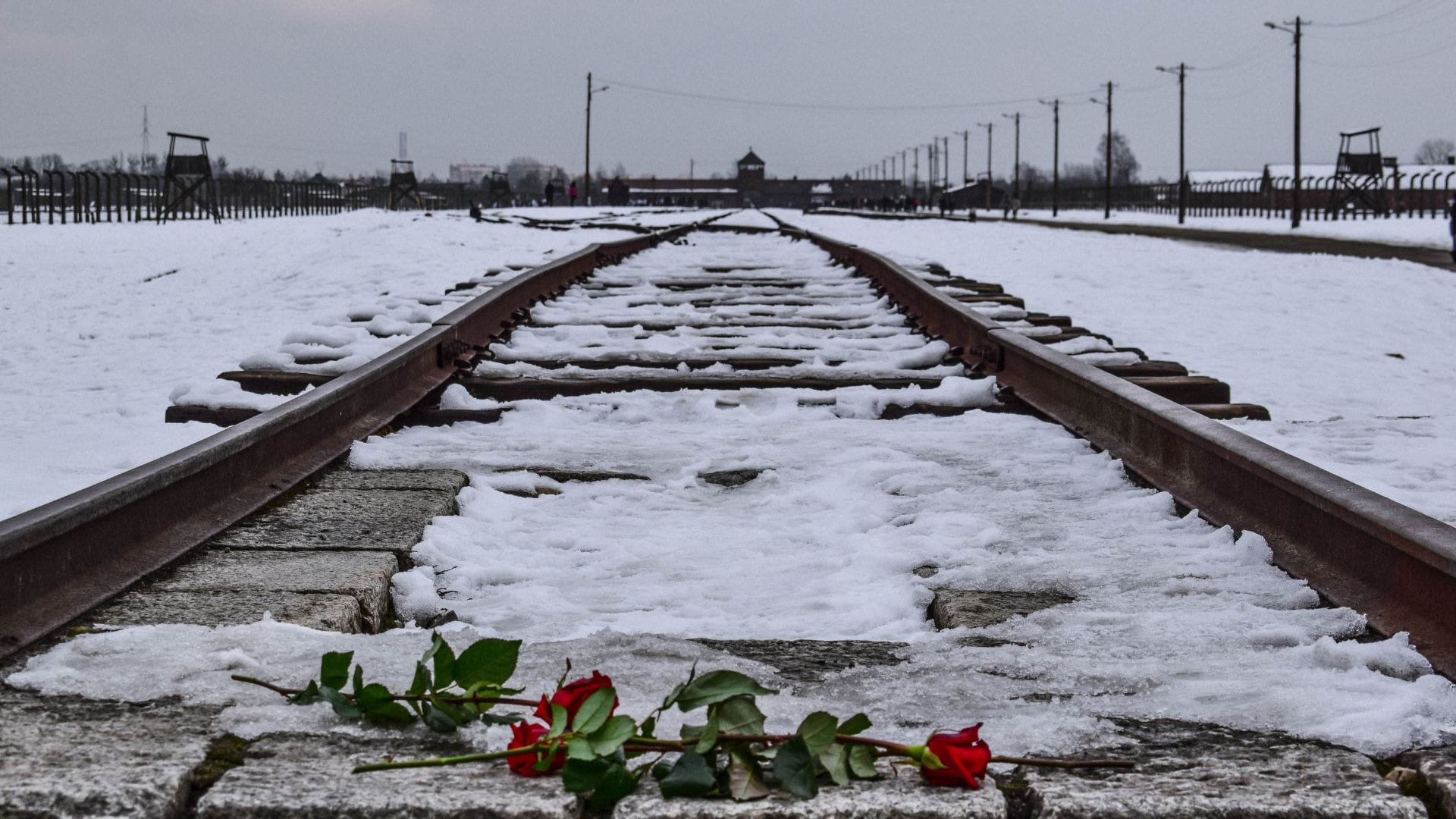Seventy years on, World War II is remembered. What is forgotten was the largest mutiny amongst the British armed forces that heralded its end.
In South East Asia, the end of the war was not as conclusive as in Europe. The two great triumphant new powers – US Imperialism and Soviet Stalinism – had already preordained the carve up of Europe. In Asia, it was not so clear cut because of the obstacle of the, albeit crumbling, British Empire. Britain’s control of the South East Asia colonies was a barrier to US expansionism. The US wanted the colonies of Britain and other European states to become ‘independent’ friendly states, a new market in the Pacific ready for exploitation by the expanding US economy, and a military bulwark to protect their western flanks against the USSR in the new Cold War. The US had developed a growing base in Chiang Kai-shek’s China. They envisaged a new capitalist China would be a springboard into the rest of the Far East.
The US lent on Britain heavily to abandon its imperial past. In August 1945, President Truman celebrated the end of the war by immediately cancelling Lend-Lease aid to Britain, plunging it into financial crisis. So much for the ‘special relationshilp’.
The War Cocludes
In Europe, the Red Army juggernaut had pulverised the German armies, while the mass bombing on an industrial scale by the RAF and USAF had returned the ‘thousand year Reich’ to the Stone Age. There was nothing left. In the Far East, while the fire bombings and then two Atom Bombs had ‘beheaded’ the Japanese military regime at home, their armies remained intact throughout most of South East Asia, numbering over 100,000 and still fully armed.
As well as the US economic pressure, British imperialism faced a nightmare. Its dream of regaining its colonies, from India to Malaya seemed increasingly forlorn. The colonial revolution was on the march for national liberation.whether based on the model of Nehru in India, or Mao in China.
The South East Asian masses had seen a fellow Asian country bring down what they had thought of as the invincible British Empire. They had rebelled against their new brutal Japanese rulers to win back their own countries, and were not now prepared to hand them back to their old colonial masters. British imperialism knew that independence for the ‘jewel in the Crown’ was inevitable – once India broke free, the other colonies would go down like dominoes. Support for Communism meanwhile was spreading like wildfire.
British Imperialism had to try a new tact to keep hold of its loot. Presenting a liberal face to the south east Asian masses, personified by the appointment of Lord Louis Mountbatten as Supreme Commander of South East Asia Command (SEAC), the strategy was simple – drive a wedge between the nationalists and communists in the independence movements, and bribe and cajole the former into a new ‘Commonwealth’ of comprodor client states, ripe for British exploitation once more.
For the ordinary British squaddie, these were bewildering times. The war was over, yet while they witnessed the newsreels of mass joy at home, they were still in the trenches fighting new battles. Many had not seen home for over three years. There was frustration that they were missing out on the national enthusiasm for the new radical Labour government of 1945, and all that it promised in new jobs and higher education.
Demobilisation looked further and further away, as they realised that Britain was retaining them to fight new colonial wars, against peoples they had just liberated. The soldiers cynically began to refer to SEAC as ‘Save England’s Asian Colonies.’
There was a further twist. The bulk of SEAC’s forces throughout the war had been relaint on two million Indian troops. SEAC High Command now considered these divisions ‘unstable’ as India stampeded towards independence. Mountbatten would need new ‘armed bodies of men’ to batter the colonies into the new Commonwealth. The solution was to make the mostly intact Japanese forces into, not POWs, like their German counterparts, but ‘JSP’s – Japanese Surrendered Personnel. They were incorporated into the British Army, and Japanese soldiers, still in the uniform of the Japanese Imperial Army, would be fighting alongside British soldiers and guarding British interests right up until 1949. Not all Japanese soldiers accepted this new conscription – thousands disappeared into the jungle to join the various national or communist resistance movements.
Imperialism At Work
But while British imperialism trod carefully, not so the Dutch and French imperialists, who deluded themselves that it was ‘business as usual’. The Dutch government wanted to reclaim its old colonies in Indonesia. Prime Minister Pieter Gerbrandy stated: “The Netherlands nation is far more than a small part of the European continent. We have a stake in four continents. Our overseas interests condition our very existence.”
Despite this chest beating, Gerbrandy had no forces to grab back Dutch ‘interests’ – the Dutch state machine had been shattered by the German occupation. They looked to SEAC to do the dirty work, and Mountbatten was happy to oblige. Britain had a 40 per cent share in the Royal Dutch Shell company, which in turn had a keen eye on regaining the oil refineries in Sumatra and Borneo. Mountbatten, albeit treading a careful path, was also keen to give a show of force to bring the national liberation movements into line.
It was a disaster. A small combined British and Indian force walked straight into an insurrection, as the Indonesian masses rose in fury at Gerbrandy’s attempt to put them back in the colonial yoke. An uprising by militas and workers around Indonesia’s second largest city, Surabaya, saw 200 British and Indian soldiers massacred, including their commanding officer, Brigadier Mullaby.
‘Liberal’ Mountbatten’s reprisal was swift and brutal. It was the last pitched battle of World War II – even though war had ended. 24,000 British, Gurkha, Indian and Japanese troops fought 20,000 Indonesian guerilla fighters and 3,000 Japanese troops who went over to their side, and 100,000 of the city population organised into militias.
During the bitter street fighting, it was a one sided battle with Mountbatten sending in fighter bombers to strafe the streets. 10,000 Indonesians died compared to 600 Allied troops. Such was the ferocity of the repression, that Tony Blair felt it politic to apologise to the Indonesian government in 2001 for Britain’s actions.
British troops however, although having done their ‘duty’ were now totally cynical about their role in South East Asia. By November 1946, Holland had finally mustered enough conscript troops to take over. As these raw troops disembarked, the Scottish soldiers – the Seaforth Highlanders – who they were relieving, greeted them with clenched fist salutes and cries of ‘Merdeka!’ – the Indonesian liberation cry of ‘freedom!’
More shocks were to come. Having seen the Dutch imperialists regain their colony (albeit short lived) at the point of British bayonets, the French colonists wanted their piece of the pie returned. The French colonialists were more hated than any other group by British troops, who they saw as traitors. The Vichy regime in the colony had openly collaborated with the Japanese throughout the occupation.
Vietnam
In French Indo-China – Vietnam – a force of British and Japanese troops were sent in to ‘restore order’, after the new national liberation leader Ho Chi Minh formed a government. Now the SEAC force arrived, the French colonialists opportunistically launched a vicious pogrom against Ho Chi Minh’s forces, driving them into the jungle, from where they began their 30 year struggle for liberation. The Vietnam war had begun.
The British commander, General Douglas Gracey, was an imperialist of the old Tory order, and enthusiastically sent the combined British and Japanese force to back the French coup. Mountbatten was furious with Gracey’s aggression, but only in terms of scale. In rebuking him, Mountbatten lets slip his ‘liberal’ mask, telling Gracey he was “…distressed to see that you have been burning down houses, and in congested areas too! Cannot you give such unsavoury jobs – if they really are military necessities- to the French in future.”
Forced into fighting wars they no longer believed in, demoralisation began apace in British military forces. It took many forms. Depression was widespread. The Royal Army Medical Corps had to draft in 100 extra psychiatrists to cope with the work load.
Rowdiness and debauchery was common place. Levels of Venereal Disease rose to seven per cent in the British Army, the highest level in its history. So rapacious were the troops in Singapore, that peasant girls forced by desperate poverty to work as ‘taxi dancers’ as they were called, formed a trade union to protect themselves. The film star Dirk Bogarde, then a serving British officer in Calcutta, recalled an incident in his memoirs involving the Eniskillen Fusiliers. Returning from the tough campaign in Burma, they crowded into a cinema to watch Errol Flynn in the film ‘Objective Burma!’ Furious at the portrayal of apparently the Americans doing all the fighting, they gave the film the severest of reviews – they burnt down the cinema.
In Burma, such was the level of pilfering and racketeering taking place, the BMA – the Burma Military Administration – was known instead as the ‘Black Market Administration’.
But for every lumpen act of rebellion, there were equally more progressive elements at work. The SEAC High Command became alarmed at the levels of fraternisation and support for the national liberation movements amongst the troops.
In Malaya, troops were openly attending nationalist and communist rallies. When the Singapore Special Branch raided the headquarters of the Malayan Communist Party, they were dismayed to discover that most of the books in the library had actually been ‘donated’ by sympathetic soldiers from the Army’s very own Education Centres.
In Bukit Timah, Singapore, plantation workers held a General Strike – British troops not only refused to quell it, but warned their red faced officers that they were thinking about joining it.
“The Red Air Force”
Furious generals meanwhile began to dub the RAF as the ‘Red Air Force’ after an incident involving Nehru. The Indian nationalist leader had been banned by SEAC from attending a conference in Burma of South East Asian national liberation leaders. But while being ferried by RAF transport plane to one of the many negotiations with Mountbatten, the plane mysteriously developed ‘engine trouble’ and diverted to Rangoon, ensuring Nehru made the conference. The rank and file servicemen were beginning to have their say about the future of the Empire.
All the time anger fermented at the foot dragging over demobilisation. One Airman, C Miller based near Calcutta, complained: “Large liners such as the Queen Mary were being used to ship GI brides back to the US. Yet the Air Ministry persisted in telling us that they couldn’t bring us back because of a shortage of shipping!”
The breaking point came in early 1946 when SEAC ordered that all three arms of the service should revert to Peacetime Regulations. This meant a return to the spit and polish and mindless square bashing of peacetime – yet the troops were still fighting real wars despite the war being over.
Organise And Strike!
Enough was enough. Labour Party, Communist Party and trade union members amongst the services began to openly organise. The first strikes broke out amongst the RAF in January 1946 in Karachi. A key tactic for the strikers was to organise amongst Signals personnel, so news of the strike could be communicated to other bases rapidly. The next largest walkout was at the Seletar air base in Singapore. After a mass meeting in the canteen, 4,000 RAF personnel went on strike, including some officers.
The largest strike was at Cawnpore, the largest RAF base in India – 5.000 went on strike, despite a personal visit and negotiations with the Strike Committee, by Air Marshal Sir Roderick Carr, the Chief of Staff in India. At Kallang air base, six strikers were arrested, but a deal was struck with High Command that if they were released without charge, the base could return to normal. SEAC backed down and released the prisoners.
The strikes, which were called for two or four day periods, were disciplined and well organised. All air-sea rescue and medical operations were maintained. Strike Committees were formed. Former journalists, now in uniform, were drafted into produce strike bulletins.
The strike ran like a virus throughout SEAC and beyond – throughout South East Asian and India, through the Middle East, and from Cairo through North Africa, with walkouts even as far away as Gibraltar. At its height 50,000 RAF servicemen were on strike.
The voices of reaction at home were furious, with the Daily Mail (then as now) baying about a ‘communist conspiracy’ and claiming the Soviets had placed “airman-agitators” amongst the RAF Signals corps.SEAC moved to quell the strike. Two strike leaders were picked out of the 50,000 strikers, Arthur Attwood at Karachi and DC Brayford at Manipur. They faced the same colonial legislation being used against the mass trade unions in Singapore and Malaya.
Far from quelling the strike movement, it spread. In Singapore harbour, HMS Northway refused orders. More alarmingly for SEAC, the strike tactic spread to the Army, and naturally to the regiment with the most contact with the RAF. In May 1946, the Parachute Regiment rebelled in Malaya. Under the Peacetime Regulations, a kit inspection parade had been called. But spit and polish was impossible in the jungle mud. The Paras held a mass meeting and twice refused to obey orders; 258 were arrested and taken to Kluang airfield for a ‘mass trial’ , some appearing in handcuffs. Over 240 of them were sentenced to between three and five years prison.
When news reached back home there was outrage that the heroes of the ‘Forgotten War’ were being treated in such a way, and the striking Paras were soon released and the convictions were quashed. Furthermore, rather than the strike being subdued by the repression, it began to spread to Britain’s colonial forces.
Anchored off Bombay (now Mumbai), the Royal Indian Navy mutinied, with 3,000 sailors disembarking to hold a victory parade around the city, marching behind Indian Congress and Muslim League flags, much to the adolation of the city’s population. Strikes and mutinies took place too amongst the Indian Army, some of them ending in bloodshed.
The Viceroy of India, General Wavell, fumed to Mountbatten: “I am afraid that the example of the RAF, who got away with what was really a mutiny, has some responsibility for the present situation.”
The Theatre Of Class War
For British imperialism, its ‘armed bodies of men’ were evaporating before its eyes. They realised the game was up. Troublesome regiments and squadrons were rapidly deployed out of this new theatre of class war, and the demobilisation process sped up – in the next few months, over 100,000 RAF personnel were released.
Even if a disciplined imperial army could have been maintained, they could not have halted the forward march of the colonial revolution, as US imperialism was to discover over the next 30 years. But the actions of the rank and file British servicemen sped up the process.
As Ted Grant would later comment in 1964 in his polemic, The Colonial Revolution and the Sino-Soviet Split: “…in 1945, Britain had drawn the conclusion from the revolt of the Indian people, of the necessity to arrive at some sort of compromise with the Indian bourgeoisie and landlords. Partly this was due to the impossibility, because of the radical mood of the soldiers of Allied imperialism and the working class in Britain, of waging a large scale war of conquest or re-conquest of India, and partly for fear of the upsurge of the Indian people.”
In South East Asia, it was ‘end of empire’ for the old Imperial order.






